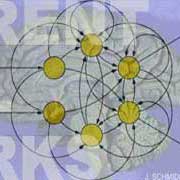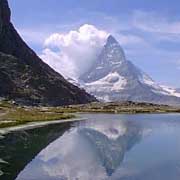| Job Offers 2011: J. Schmidhuber is looking for several POSTDOCS and several PHD STUDENTS. Update of 16 August 2011: All positions are filled! |

|
We are seeking
outstanding
researchers with experience / interest in topics such as
pattern recognition, statistical learning theory,
large scale reinforcement learning (RL),
recurrent networks (RNN),
evolution,
unsupervised learning & deep networks,
Universal AI and RL,
Universal Problem Solvers,
adaptive robotics,
artificial curiosity
& creativity.
Goal: to improve the state of the art in machine learning & robotics.
Salary: Postdoc ~ SFR 72,000 / year (~ US$ 91,000 / year as of 16 August 2011);
PhD student ~ SFR 40,800 / year (~ US$ 51,000). Low taxes. PhD students should have a master
degree, preferably in computer science or related fields including math and physics.
Start: 2011 (flexible).
. |

|
IDSIA is located just outside the beautiful city of Lugano in Ticino (pics), the scenic southern Swiss province. Milano, Italy's center of fashion and finance, is 1 hour away, Venice 3 hours.
Check out some previous IDSIA
postdocs who went on to become profs |
| Submit your CV, a list of 3 references and their email addresses, and a statement of relevant research interests, to cinzia@idsia.ch and juergen@idsia.ch. In the subject header, mention name and job type and keyword sn2011. For example, if your name is Jo Mo and you want a postdoc job, use subject: Jo Mo postdoc sn2011 |

|
Update of 10 June 2011. We filled many postdoc and PhD positions in 2009 and 2010, but there will be new projects starting in 2011, and we are continually evaluating old and new applicants, always open for outstanding talents, hoping to find just a few more additional postdocs and PhD students who have exactly the profile necessary to complement the already existing expertise. If you already submitted an application in 2010 under the keyword sn2010 instead of sn2011: don't worry; there is no need to apply again - we already have your files! (Here is the previous version of this page.) Interviews. Most interviews take place at IDSIA, but sometimes we also arrange Skype video interviews. (Previously we also conducted interviews at the Singularity Summit in NYC, the EUCogII meeting, CogSys 2010, EUCogII 2010, AGI 2010, and GP Theory & Practice 2010 in Ann Arbor). Upcoming interviews at IDSIA (Switzerland), IJCNN 2011 (San Jose, CA), AGI 2011 (Mountain View, CA). Other recent jobs (filled) in the lab of JS at IDSIA: 5 postdoc and 5 PhD positions in various related projects; 1 Postdoc in biologically plausible reinforcement learning. |

|
IDSIA was the smallest of the world's top ten AI labs listed in the 1997 "X-Lab Survey" by Business Week magazine, and ranked in fourth place in the category "Computer Science - Biologically Inspired". IDSIA's most important work was done after 1997 though. IDSIA is affiliated with the University of Lugano (USI) and USI's Faculty of Informatics and SUPSI. It has strong ties to the TU Munich lab of cognitive robotics at TUM Computer Science. |
|
IDSIA is small but visible, competitive, and influential. For example, its Ant Colony Optimization Algorithms broke numerous benchmark records and are now widely used in industry for routing, logistics etc. (today entire conferences specialize on Artificial Ants). IDSIA is also the origin of the first mathematical theory of optimal Universal Artificial Intelligence and self-referential Universal Problem Solvers (previous work on general AI was dominated by heuristics). IDSIA's artificial Recurrent Neural Networks learn to solve numerous previous unlearnable sequence processing tasks through gradient descent, Artificial Evolution, Reinforcement Learning, and other methods. Research topics also include complexity and generalization issues, unsupervised learning and information theory, forecasting, learning robots. IDSIA's results were reviewed not only in science journals such as Nature, Science, Scientific American, but also in numerous popular press articles in TIME magazine, the New York Times, der SPIEGEL, and many others. Numerous TV shows on Tech & Science helped to popularize IDSIA's achievements. Switzerland is a good place for scientists. It is the origin of special relativity (1905) and the World Wide Web (1990), is associated with 105 Nobel laureates, and boasts far more Nobel prizes per capita than any other nation. It also has the world's highest number of publications per capita, the highest number of patents per capita, the highest citation impact factor, the most cited single-author paper, the biggest and most expensive machine ever, etc. As of 2010/2011, Switzerland is again the most competitive country, according to the World Economic Forum. It also got the highest ranking in the list of happiest countries (1990s average), according to the Happiness Foundation. More in Schmidhuber's page on Switzerland - the best country in the world, especially for scientists! |